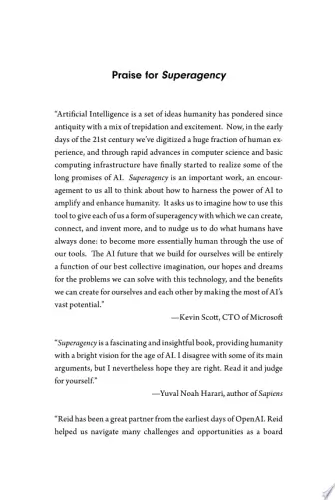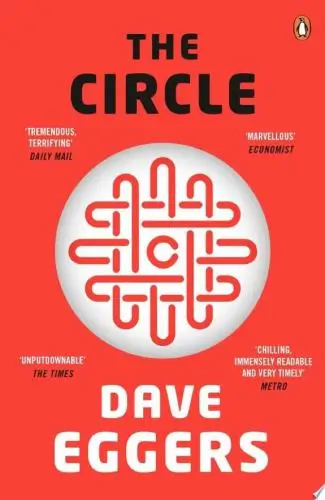
The Innovator's Solution
Creating and Sustaining Successful Growth
What's it about?
The Innovator's Solution dives deep into the challenging world of business growth, providing a roadmap for innovation that defies traditional thinking. Clayton M. Christensen expands on his disruptive innovation theory, offering strategic insights on how companies can create sustainable growth engines. Through practical examples and sharp analysis, this book is for entrepreneurs and executives seeking to innovate their way to the top. It's a masterclass in understanding customer needs and redefining markets.
About the Author
Clayton M. Christensen (1952-2020) was a Harvard Business School professor and influential thought leader in business innovation and disruption. Author of "The Innovator's Dilemma," his work explores how established companies can be overtaken by upstarts through technological innovation, emphasizing the importance of strategic adaptability. His theories have significantly shaped modern management practices.
10 Key Ideas of The Innovator's Solution
Identify and Target Non-Consumption or Underserved Markets for Disruptive Innovation
Focus on markets where there are either no existing solutions or the current solutions do not meet the needs of a significant portion of potential customers.
These areas represent opportunities for disruptive innovations that can redefine the market by offering simpler, more convenient, or more affordable products or services.
By targeting these segments, companies can establish a foothold without directly confronting established competitors.
This approach allows them to grow and improve their offerings over time.
Learn DeeperResearch and Understand Your Target Market: Spend time understanding the needs, frustrations, and desires of potential customers in markets that are currently underserved or not served at all. Use surveys, interviews, and observation to gather this information.
Evaluate Your Product or Service Fit: Assess how your product or service can meet the unmet needs of your target market. Consider how you can make it simpler, more convenient, or more affordable than existing solutions.
Start Small and Iterate: Launch your product or service to a small segment of your target market first. Gather feedback, learn from the initial users, and iterate on your offering before scaling.
Focus on Accessibility and Convenience: Ensure that your product or service is easily accessible to your target market. This might mean rethinking distribution channels or payment methods to lower barriers to adoption.
Build a Community Around Your Solution: Engage with your users and build a community around your product or service. This can provide valuable feedback, foster loyalty, and help spread the word organically.
- Example
A tech startup notices that rural communities have limited access to high-quality educational resources. They develop an affordable, solar-powered device pre-loaded with educational content that doesn't require internet access, targeting non-consumption in these underserved areas.
- Example
A company observes that many people find traditional banking services inaccessible or intimidating. They introduce a simple, user-friendly mobile app that allows users to manage their finances with minimal fees, targeting the underserved market of those who are dissatisfied with or excluded from traditional banking.
Develop a Business Model That Supports Your Disruptive Innovation
Creating a disruptive innovation requires a business model that is tailored to its unique value proposition and market.
This includes considering how the product will be produced, marketed, and delivered to customers in a way that aligns with the cost structure and profit margins needed for sustainability.
The right business model ensures that the innovation remains viable and competitive as it scales.
Learn DeeperIdentify Your Unique Value Proposition: Start by clearly defining what makes your innovation different and valuable to your target market. This could be a new technology, a unique service model, or an unaddressed customer need.
Design Your Business Model Around Your Innovation: Once you know your value proposition, design your business model to support it. This includes figuring out how you'll produce your product or service, how you'll market it, the price point, and how it will be delivered to your customers.
Test and Iterate Your Model: Before fully launching, test your business model in a real-world setting. Use feedback to make necessary adjustments. This iterative process helps ensure that your model is viable and meets the needs of your market.
Plan for Scalability: From the beginning, think about how your business model will handle growth. Consider what resources, processes, and partnerships you'll need as your innovation gains traction and demand increases.
- Example
Netflix's shift from DVD rentals to streaming services required a complete overhaul of its business model, focusing on content licensing, developing a robust streaming infrastructure, and a subscription-based revenue model.
- Example
Dollar Shave Club disrupted the razor market by identifying a niche of consumers frustrated with the high cost of razors. They designed a direct-to-consumer subscription model that offered quality razors at a lower price point, bypassing traditional retail channels.
Utilize Flexible and Agile Development Processes
Innovation often involves venturing into uncharted territory, which means assumptions about what customers want or how a product should work might change.
Adopting flexible and agile development processes allows for iterative design, development, and testing.
This approach enables quick adjustments based on feedback and changing market conditions, reducing the risk of costly mistakes and ensuring the final product better meets customer needs.
Learn DeeperStart Small and Iterate: Begin your project with a basic version of your product or service. Use this as a starting point to gather feedback from early users or testers. Based on this feedback, make improvements and adjustments before scaling up.
Embrace Feedback Loops: Create mechanisms to regularly collect and analyze feedback from your users. This could be through surveys, user testing sessions, or direct communication channels. Use this feedback to inform your development process and prioritize changes.
Foster a Culture of Flexibility: Encourage your team to be open to change and to view setbacks as opportunities for learning and growth. This mindset will make it easier to pivot when necessary and to embrace new directions based on user feedback or market demands.
Leverage Agile Methodologies: Implement agile methodologies in your development process. This involves breaking down the project into smaller, manageable tasks, having regular check-ins (sprints), and adapting plans based on the outcomes of these sprints.
- Example
A tech startup developing a new app might release a minimal viable product (MVP) to a small group of users to test its core functionality. Based on user feedback indicating that a particular feature is confusing or unnecessary, the startup quickly revises this aspect of the app before launching it to a wider audience.
- Example
A small business looking to introduce a new service might start by offering it to a select group of existing customers at a discounted rate in exchange for their detailed feedback. This feedback reveals that while the overall response is positive, there are specific areas for improvement, such as customer support and user interface. The business then focuses on enhancing these areas before rolling out the service to all customers.
Leverage Technology to Create and Sustain Competitive Advantage
Technology can be a powerful enabler of disruptive innovation, allowing new entrants to offer unique capabilities or dramatically lower costs.
Companies should focus on leveraging emerging technologies to enhance their product offerings or streamline operations.
However, it's crucial to continuously monitor and adapt to technological advancements to maintain a competitive edge.
Learn DeeperStay Informed About Emerging Technologies: Regularly read tech blogs, attend industry conferences, or participate in online forums. This will help you stay ahead of the curve and identify technologies that could impact your field.
Evaluate Your Current Operations for Improvement Opportunities: Look at your product development, marketing, sales, and customer service processes. Identify areas where new technologies could make these processes more efficient or effective.
Experiment with New Technologies on a Small Scale: Before fully committing, test new technologies in pilot projects or limited areas of your business. This allows you to gauge their impact and make necessary adjustments without risking significant resources.
Encourage a Culture of Innovation Within Your Organization: Foster an environment where employees feel comfortable suggesting and trying new technologies. This can lead to valuable innovations that could give your company a competitive edge.
Regularly Review and Adapt Your Technology Strategy: Technology evolves rapidly, so it's important to periodically reassess your technology strategy. Be prepared to pivot or adopt new technologies as needed to maintain your competitive advantage.
- Example
A small retail business could leverage augmented reality (AR) technology to enhance the online shopping experience for customers. By implementing an AR feature on their website, customers could visualize how products would look in their own homes before making a purchase.
- Example
A manufacturing company might implement machine learning algorithms to predict equipment failures before they happen. By analyzing historical operation data, these algorithms can identify patterns that precede a breakdown, allowing for preventative maintenance and reducing downtime.
Understand and Apply the Jobs-to-be-Done Framework
This concept focuses on understanding the 'job' a customer is hiring a product or service to do.
By deeply understanding the customer's needs and the context in which they use your product, you can design solutions that better address those needs.
This approach shifts the focus from the product itself to the outcome the customer desires, leading to more innovative and targeted solutions.
Learn DeeperIdentify the Job: Start by observing and talking to your customers. Ask them about their challenges, frustrations, and what they wish they could accomplish with your product or service. Look for the underlying job they're trying to get done.
Map the Customer Journey: Once you've identified the job, map out the customer's journey to accomplish this job. Identify all the steps, pain points, and moments of delight. This will help you see where there are opportunities for innovation.
Prototype Solutions: Based on your understanding of the job and the customer journey, brainstorm and prototype potential solutions. These don't have to be perfect or final; the goal is to start testing and learning what works best.
Iterate Based on Feedback: Use customer feedback on your prototypes to refine and improve your solution. This iterative process ensures that the final product or service is closely aligned with the job your customer needs done.
- Example
A coffee shop owner realizes their customers aren't just buying coffee; they're hiring the coffee shop to provide a comfortable space to work or relax. In response, the owner redesigns the space to include more seating options, free Wi-Fi, and power outlets.
- Example
A software company learns that small business owners use their accounting software not just for tracking expenses but to understand their financial health quickly. The company then introduces a dashboard feature that highlights key financial metrics at a glance.
Deeper knowledge. Personal growth. Unlocked.
Unlock this book's key ideas and 15M+ more. Learn with quick, impactful summaries.
Read Full SummarySign up and read for free!
The Innovator's Solution Summary: Common Questions
"There is nothing quite so useless as doing with great efficiency something that should not be done at all." - Clayton M. Christensen, The Innovator's Solution
The Innovator's Solution is a thought-provoking book that challenges traditional business models and emphasizes the importance of disruptive innovation. Christensen's concept of "disruptive innovation" and his exploration of how successful companies can maintain their competitive edge by continuously innovating are particularly compelling. The case studies and frameworks presented throughout the book provide valuable insights into how companies can adapt and thrive in a rapidly changing market.
Overall, The Innovator's Solution is a must-read for anyone interested in business strategy, innovation, and staying ahead in a competitive environment. If you enjoyed books like "The Innovator's Dilemma" by the same author or "Good to Great" by Jim Collins, this book will surely resonate with you.
Experience Personalized Book Summaries, Today!
Discover a new way to gain knowledge, and save time.
Sign up for our 7-day trial now.
No Credit Card Needed

Similar Books

Mathematics for Machine Learning
Marc Peter Deisenroth
Clinical Microbiology
Parslow
Medical Laboratory Science Review
Robert R Harr
Superagency
Reid Hoffman
Artificial Intelligence
Nicola Acocella
Frankenstein
Mary Shelley
The Circle
Dave Eggers
Roitt's Essential Immunology
Peter J. Delves
Laws of UX
Jon Yablonski
Structures
J. GordonTrending Summaries

Peak
Anders Ericsson
Never Split the Difference
Chris Voss
Smart Brevity
Jim VandeHei
The Psychology of Money
Morgan Housel
The First 90 Days
Michael D. Watkins
Atomic Habits
James Clear
Thinking, Fast and Slow
Daniel Kahneman
The Body Keeps the Score
Bessel van der Kolk M.D.
The Power of Regret
Daniel H. Pink
The Compound Effect
Darren HardyNew Books

The ^AOxford Handbook of Job Loss and Job Search
Ute-Christine Klehe PhD
Job Interviews For Dummies®
Joyce Lain Kennedy
Job Interviews In A Week
Alison Straw
Handbook of Career Development
Gideon Arulmani
The Art of Spending Money
Morgan Housel
$100M Offers
Alex Hormozi
A Candle for Kiri
Edna Mae Holm
Principles of Marketing, Global Edition
Gary Armstrong
Serpent Rising: The Kundalini Compendium
Neven Paar
